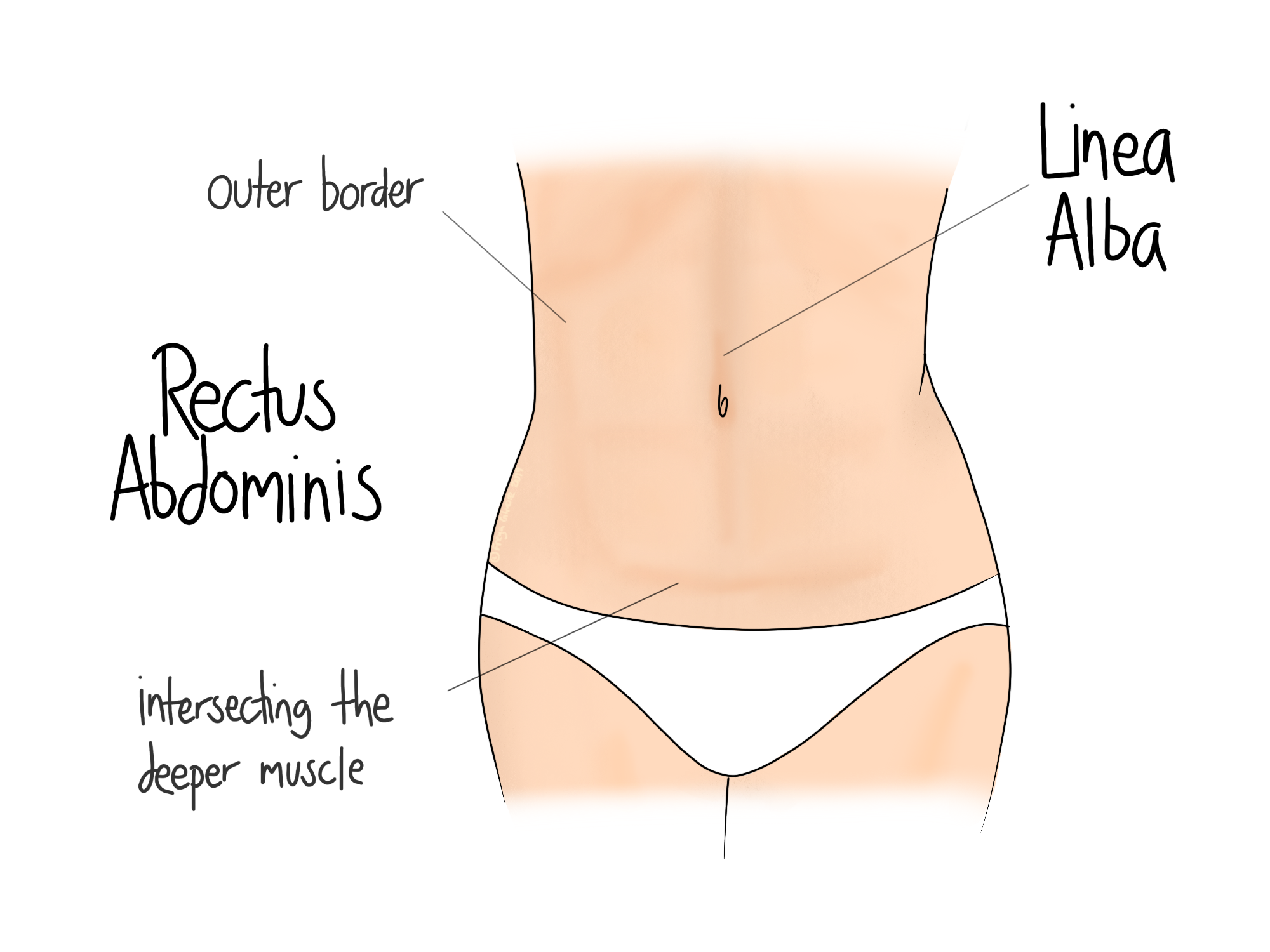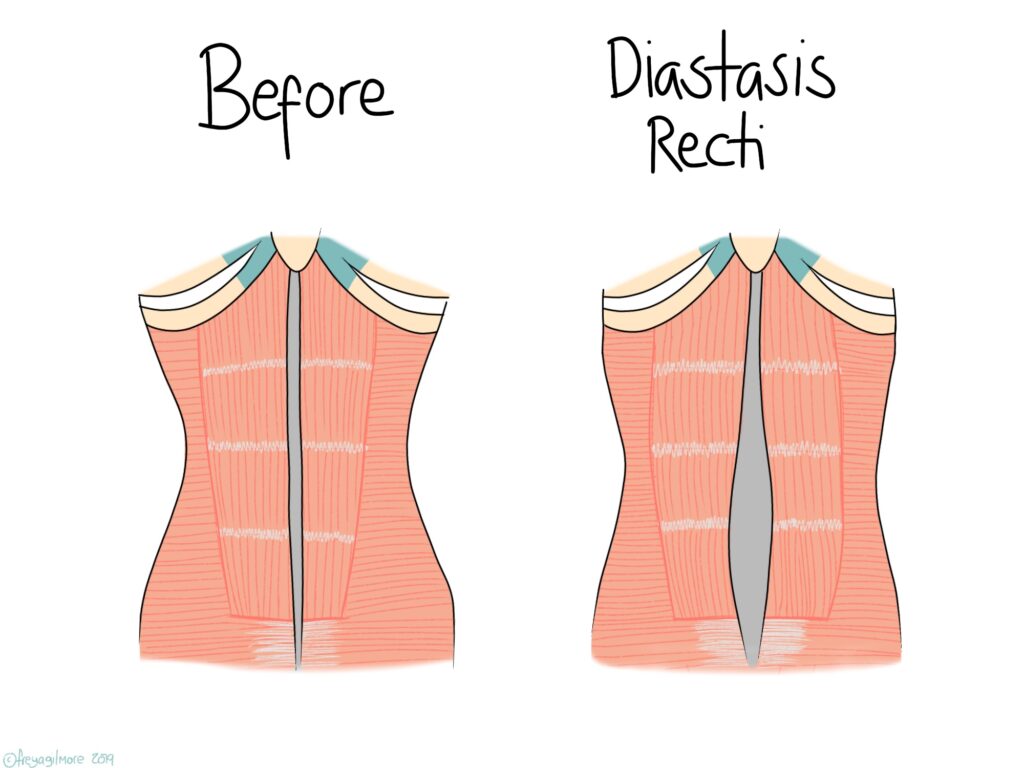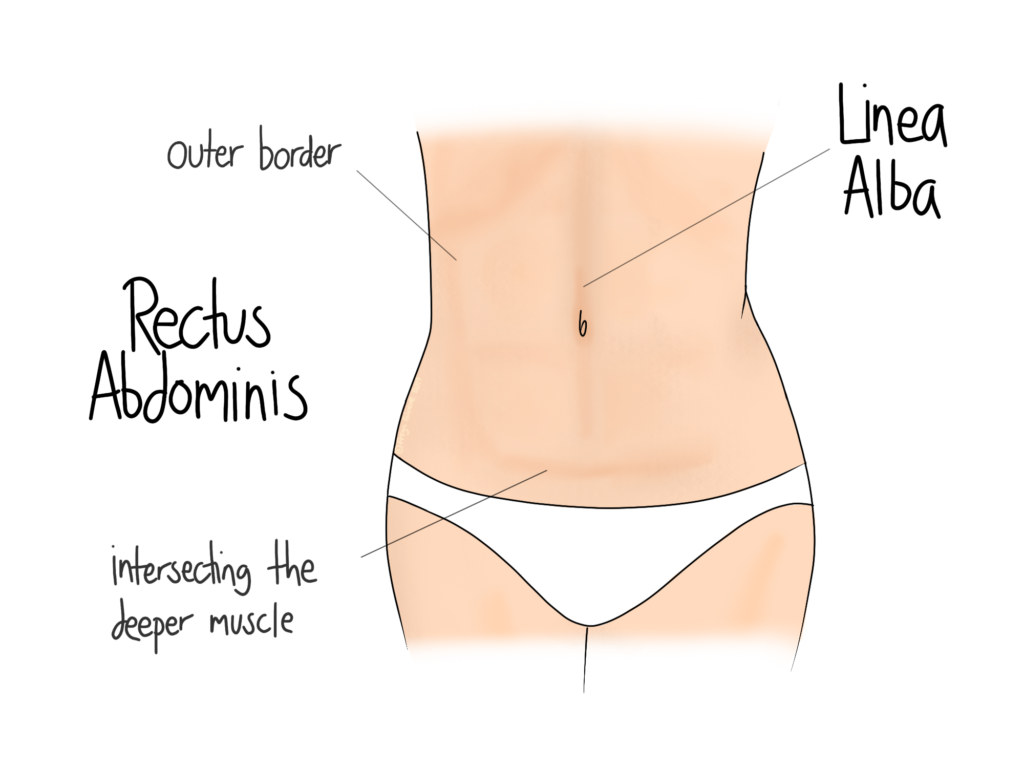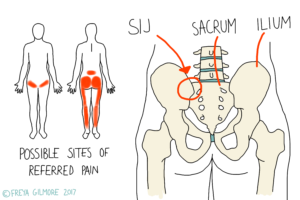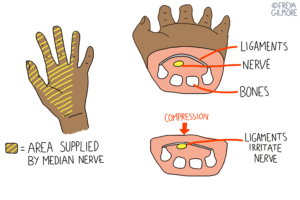Diastasis Recti refers to the separation of the rectus abdominis muscles (the six-pack muscles). They are joined in the centre of the abdomen by connective tissue that is designed to thin and stretch in pregnancy, but they do not always come back together completely after post-partum healing. Diastasis recti can also happen at other times, and to men- most general information in this post will apply to cases beyond pregnancy.
Diastasis Basics
During the third trimester, or sometimes in the second, the abdominal muscles start to separate to make room for the growing baby. The linea alba- the connective tissue between the two muscles- stretches to allow this. This tissue runs from the bottom of the breast bone down to the top of the pubic bone. Separation can happen anywhere along this line.
There is no agreed time at which a diastasis can be diagnosed, but it makes sense to at least wait for the first six weeks to pass before assessing. After a caesarean section it may be sensible to wait longer than this. The abdominal wall has gone through even more than usual, and there are two parts that need to heal.
There may or may not be a connection between diastasis and lower back pain. However, links have been drawn with urinary incontinence and pelvic organ prolapse (POP). As incidence of POP increases with age, it is worth addressing even historic diastases as soon as possible.
Diagnosis
Your osteopath can carry out the test for diastasis recti in the treatment room. You will be asked to expose your tummy and lay on your back with your knees bent and your feet flat. To test for a separation, we want to put the area under pressure, so you will be asked to raise your head. Your osteopath may initially ask you to do this while they observe to see if there is any visible “doming”. To test the severity of the possible diastasis, they will place a hand on your tummy. When you repeat the movement, they will be able to feel the width and depth of any separation.
A separation of two fingers width or more is generally considered a diastasis. Depth is less commonly discussed, but that is also important.
Management
Diastasis is not a sign of weak musculature. Despite this, exercise can be a good way of managing the condition. Multiple muscles are involved in diastasis, each with a different role. This means that one exercise won’t cut it. Your osteopath can give you a plan that targets all relevant muscles.
As the abdomen heals, it may help to minimise activities that raise intra-abdominal pressure. Your osteopath can advise you here. This may simply mean adjusting the way you do things- like correcting your lifting technique.
If you’re concerned about this topic, make an appointment online now.

